Martes 24/03/20 Futures al alza
48 mensajes
• Página 3 de 4 • 1, 2, 3, 4
Re: Martes 24/03/20 Futures al alza
CHG %CHG
DJIA 20064.19 1472.26 7.92
S&P 500 2382.06 144.66 6.47
Nasdaq Composite 7230.92 370.25 5.40
Japan: Nikkei 225 18092.35 1204.57 7.13
UK: FTSE 100 5446.01 452.12 9.05
Crude Oil Futures 23.42 0.06 0.26
Gold Futures 1657.50 89.90 5.73
Yen 111.47 0.23 0.21
Euro 1.0758 0.0031
DJIA 20064.19 1472.26 7.92
S&P 500 2382.06 144.66 6.47
Nasdaq Composite 7230.92 370.25 5.40
Japan: Nikkei 225 18092.35 1204.57 7.13
UK: FTSE 100 5446.01 452.12 9.05
Crude Oil Futures 23.42 0.06 0.26
Gold Futures 1657.50 89.90 5.73
Yen 111.47 0.23 0.21
Euro 1.0758 0.0031
- admin
- Site Admin
- Mensajes: 164292
- Registrado: Mié Abr 21, 2010 9:02 pm
Re: Martes 24/03/20 Futures al alza
¡¡¡NEW!!! Los graficos del dia, 
.
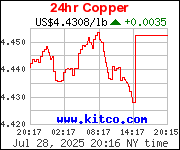
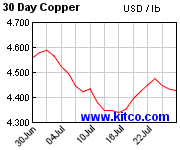
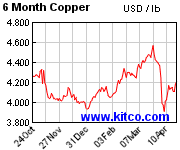
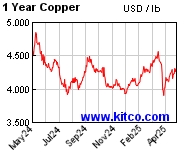
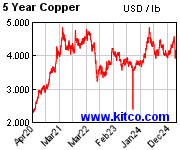
.

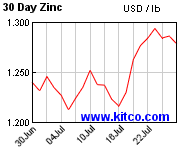
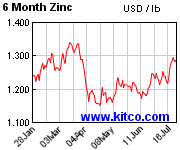
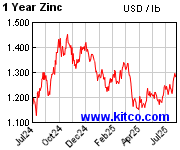
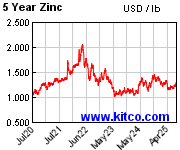
.

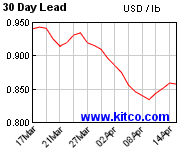
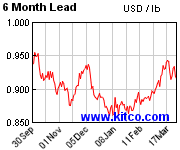
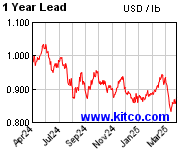
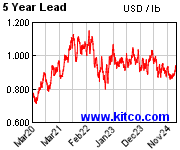
.
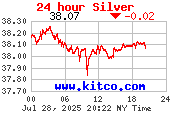



.
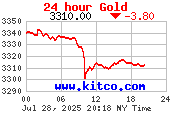



.
.





.





.





.




.




.
- Comodoro
- Mensajes: 980
- Registrado: Jue May 06, 2010 8:24 am
- Ubicación: LIMA
Re: Martes 24/03/20 Futures al alza
Récord en puntos
2,112.98 al alza a 20,794.91 puntos
2,112.98 al alza a 20,794.91 puntos
- admin
- Site Admin
- Mensajes: 164292
- Registrado: Mié Abr 21, 2010 9:02 pm
Re: Martes 24/03/20 Futures al alza
Dow futures rise 300 points following a historic rebound as massive stimulus deal nears
PUBLISHED TUE, MAR 24 20206:04 PM EDTUPDATED 8 MIN AGO
Yun Li
@YUNLI626
Stock futures rose in overnight trading, building on Tuesday’s historic rally, as investors awaited an unprecedented stimulus package to combat the economic impact of the coronavirus.
Futures on the Dow Jones Industrial Average climbed about 310 points. The S&P 500 futures rose 30 points.
The action in the futures market followed an epic comeback on Wall Street. The Dow soared more than 2,100 points, or more than 11%, notching its biggest one-day percentage gain since 1933 and its best point increase ever. The S&P 500 rallied 9.4% for its best day since October 2008.
CH 20200324_dow_top_10_days.png
Even with Tuesday’s massive rebound, some on Wall Street struggle to see the light at the end of the tunnel, especially without a clear sign that the coronavirus outbreak will be contained soon.
“This was a one-day bull market,” CNBC’s Jim Cramer said on “Closing Bell” on Tuesday. “You had stocks that moved so much they basically moved as if the second half of the year is going to be good. I struggle to find out why the second half of the year should be good ...I hate this kind of rally. This was a machine driven rally, just like the sell-offs … I want to wait to see.”
Lawmakers were closing in on a massive fiscal stimulus bill worth $2 trillion to blunt the economic damage from the pandemic, but talks could stretch into Wednesday morning as the two parties continued to work through the text and hash out final details.
House Speaker Nancy Pelosi told CNBC on Tuesday morning that there is “real optimism” Congress can clinch a pact within a few hours. Senate Majority Leader Mitch McConnell later said the bill is at the “five-yard line.”
Meanwhile, the coronavirus cases in the U.S. and globally still haven’t shown a sign of peaking. More than 400,000 cases have been confirmed worldwide, including over 50,000 in the U.S., according to Johns Hopkins University. So far, more than 600 deaths related to the coronavirus have been confirmed in the U.S. New York City reported nearly 15,000 cases Tuesday and 131 related deaths.
— CNBC’s Jesse Pound contributed reporting.
Subscribe to CNBC PRO for exclusive insights and analysis, and live business day programming from around the world.
PUBLISHED TUE, MAR 24 20206:04 PM EDTUPDATED 8 MIN AGO
Yun Li
@YUNLI626
Stock futures rose in overnight trading, building on Tuesday’s historic rally, as investors awaited an unprecedented stimulus package to combat the economic impact of the coronavirus.
Futures on the Dow Jones Industrial Average climbed about 310 points. The S&P 500 futures rose 30 points.
The action in the futures market followed an epic comeback on Wall Street. The Dow soared more than 2,100 points, or more than 11%, notching its biggest one-day percentage gain since 1933 and its best point increase ever. The S&P 500 rallied 9.4% for its best day since October 2008.
CH 20200324_dow_top_10_days.png
Even with Tuesday’s massive rebound, some on Wall Street struggle to see the light at the end of the tunnel, especially without a clear sign that the coronavirus outbreak will be contained soon.
“This was a one-day bull market,” CNBC’s Jim Cramer said on “Closing Bell” on Tuesday. “You had stocks that moved so much they basically moved as if the second half of the year is going to be good. I struggle to find out why the second half of the year should be good ...I hate this kind of rally. This was a machine driven rally, just like the sell-offs … I want to wait to see.”
Lawmakers were closing in on a massive fiscal stimulus bill worth $2 trillion to blunt the economic damage from the pandemic, but talks could stretch into Wednesday morning as the two parties continued to work through the text and hash out final details.
House Speaker Nancy Pelosi told CNBC on Tuesday morning that there is “real optimism” Congress can clinch a pact within a few hours. Senate Majority Leader Mitch McConnell later said the bill is at the “five-yard line.”
Meanwhile, the coronavirus cases in the U.S. and globally still haven’t shown a sign of peaking. More than 400,000 cases have been confirmed worldwide, including over 50,000 in the U.S., according to Johns Hopkins University. So far, more than 600 deaths related to the coronavirus have been confirmed in the U.S. New York City reported nearly 15,000 cases Tuesday and 131 related deaths.
— CNBC’s Jesse Pound contributed reporting.
Subscribe to CNBC PRO for exclusive insights and analysis, and live business day programming from around the world.
- admin
- Site Admin
- Mensajes: 164292
- Registrado: Mié Abr 21, 2010 9:02 pm
Re: Martes 24/03/20 Futures al alza
Dow Soars More Than 11% In Biggest One-Day Jump Since 1933
Some Wall Street analysts have stepped up discussions on whether the markets have hit bottom
By Alexander Osipovich, Caitlin Ostroff and Joanne Chiu
Updated March 24, 2020 4:59 pm ET
The Dow Jones Industrial Average surged more than 11% Tuesday, its biggest one-day gain since 1933, on signs that lawmakers were nearing a deal on a giant stimulus package to ease the economic fallout from the coronavirus pandemic.
Major indexes opened sharply higher after Treasury Secretary Steven Mnuchin and Senate Minority Leader Chuck Schumer (D., N.Y.) emerged from late-night negotiations saying they were within striking distance of a deal.
Stocks continued climbing throughout the day and closed near session highs. Senate Majority Leader Mitch McConnell (R., Ky.) voiced hope Tuesday that a deal would get done later in the day. The stimulus package is expected to be worth at least $1.6 trillion.
“Markets are definitely reacting to the prospects of a stimulus deal,” said Jason Pride, chief investment officer for private wealth at Glenmede.
The blue-chip index gained 2,112.98 points to close at 20704.91. It was the biggest one-day percentage gain for the blue-chip index in almost 90 years, and its largest-ever move in point terms.
The S&P 500 climbed 209.93 points, or 9.4%, to 2447.33. The tech-heavy Nasdaq Composite rose 557.18 points, or 8.1%, to 7417.86. All three indexes are still down at least 24% from their mid-February highs.
A string of emergency measures by the Federal Reserve to support credit markets and ensure funding for American businesses and homeowners has also helped alleviate some of the most pressing concerns among investors.
Index performance, year-to-date
Source: FactSet
Dow JonesIndustrialAverage
Stoxx Europe
S&P 500
Hang Seng
NasdaqComposite
-30%
-20
-10
0
At the same time, markets remain sensitive to reports of fresh outbreaks of the virus and the damage caused to the economy by measures to stem the contagion. Speculation about the breadth and depth of an impending global recession continue to weigh on investors.
“This is classic bear-market moves,” said David Coombs, head of multiasset investments at Rathbones Investment Management. “It doesn’t feel like there’s massive relief and confidence out there.”
Some Wall Street analysts have stepped up discussions on whether the markets have hit bottom. Credit Suisse said in a research note Tuesday that it expected the S&P 500 to hit 2700 by year’s end, which would imply a 10% gain from where it closed Tuesday.
The key to such a bounce would be tangible progress in battling the coronavirus pandemic, the bank’s analysts wrote. “Markets should quickly regain their footing once newly reported cases peak,” they wrote. “While entirely necessary, government relief efforts alone will not be enough to establish a market floor.”
Share-price change, today
Source: FactSet
Chevron
Boeing
Nvidia
UnitedTechnologies
Walt Disney
Visa
0%
10
20
30
Beaten-down energy stocks were the best-performing sector of the S&P 500. Shares of Chevron rose $12.33, or 23%, to $66.55, making it the best performer in the Dow, as the oil giant said it would slash capital spending by $4 billion to shore up its balance sheet amid a deep slump in oil prices.
Airlines, which are expected to benefit from the stimulus bill, were also among Tuesday’s winners. Shares of American Airlines Group surged $3.67, or 36%, to $13.92, although they have still lost more than half their value this year.
Investors snapped up shares of restaurant chains, many of which have been forced to close their cafes. Darden Restaurants, owner of Olive Garden, soared $12.86 a share, or 31%, to $53.89. Shares of McDonald’s jumped $24.85, or 18%, to $161.95.
Economic data has begun to show the extensive impact of the pandemic and sweeping lockdown measures that have curtailed business activity in the U.S. and abroad.
An indicator measuring U.S. manufacturing and services activity dropped at its steepest rate in over a decade. IHS Markit’s flash reading for the U.S. Composite Output Index fell to 40.5 in March from 49.6 last month—its sharpest drop since October 2009 and a sign that the U.S. is likely already in a recession, the data provider said Tuesday.
March figures for the manufacturing and services sector in Germany and the eurozone also pointed to a contraction.
“It’s an unprecedented medical emergency, which requires an unprecedented response from policy makers,” said Florian Hense, an economist at Berenberg. “As we are trying to contain the medical emergency, we are trying to pull down economic activity. We are consciously, voluntarily pulling down economic activity.”
Gold futures rose 5.9%—their best one-day performance since 2009—in a move that some investors saw as a return to normal market functioning. The price of the precious metal usually rises in times of uncertainty. But last week it fell amid a broad selloff in assets as panicky investors dumped stocks, bonds and commodities in a rush for cash.
Covid-19, the disease caused by the virus, has killed more than 18,000 people world-wide, and more than 407,000 people have been infected, according to data from Johns Hopkins University. A growing number of countries and U.S. states have ordered lockdown measures to curtail its spread.
Related Video
The Dow and S&P 500 Cap Worst Week Since 2008
0:00 / 2:27
The Dow and S&P 500 Cap Worst Week Since 2008
The Dow and S&P 500 Cap Worst Week Since 2008
The Dow and S&P 500 had their worst week since October 2008. WSJ’s Paul Vigna breaks down this week’s winner and loser, and what to expect next. Photo: Justin Lane/EPA/Shutterstock (Originally Published March 20, 2020)
There are some early signs that the global measures to contain the virus are working, or at least helping flatten the rate of new infections, though that may change, investors said.
“It’s still very early days,” said Justin Onuekwusi, head of retail multiasset funds at Legal & General Investment Management. “There’s a chance that once you get the arc down, the arc goes up again, and that’s why the market isn’t pricing that in.”
Dow Jones Industrial Average
Source: FactSet
As of March 24, 5:13 p.m. ET
Record high
Jan. ’20
Feb.
March
18000
20000
22000
24000
26000
28000
30000
32000
The WSJ Dollar Index, which tracks the currency against a basket of others, fell 0.8%. On Monday, the gauge hit its highest closing level since 2002. Currencies including the euro, U.K. pound and Japanese yen strengthened against the dollar.
The demand for U.S. government bonds, which are seen as a haven when markets are in turmoil, also showed signs of easing. The yield on the 10-year U.S. Treasury, which moves inversely to its price, rose to 0.813%, from 0.763% Monday, according to Tradeweb.
U.S. oil futures gained 2.8% to settle at $24.01 a barrel. Crude prices have plunged by more than half so far this year due to reduced energy demand and a price war between major oil-producing nations.
Treasury Secretary Steven Mnuchin (left) and incoming White House chief of staff Mark Meadows on Capitol Hill Tuesday as the Trump administration and Congress negotiate on a coronavirus stimulus package.
Photo: erik s. lesser/epa/Shutterstock
Overseas, European markets rallied, with the pan-continental Stoxx Europe 600 advancing 8.4% in its best one-day performance since 2008. Most Asian markets also closed higher, led by a 7% jump in Japan’s Nikkei 225 gauge.
Write to Alexander Osipovich at alexander.osipovich@dowjones.com, Caitlin Ostroff at caitlin.ostroff@wsj.com and Joanne Chiu at
Some Wall Street analysts have stepped up discussions on whether the markets have hit bottom
By Alexander Osipovich, Caitlin Ostroff and Joanne Chiu
Updated March 24, 2020 4:59 pm ET
The Dow Jones Industrial Average surged more than 11% Tuesday, its biggest one-day gain since 1933, on signs that lawmakers were nearing a deal on a giant stimulus package to ease the economic fallout from the coronavirus pandemic.
Major indexes opened sharply higher after Treasury Secretary Steven Mnuchin and Senate Minority Leader Chuck Schumer (D., N.Y.) emerged from late-night negotiations saying they were within striking distance of a deal.
Stocks continued climbing throughout the day and closed near session highs. Senate Majority Leader Mitch McConnell (R., Ky.) voiced hope Tuesday that a deal would get done later in the day. The stimulus package is expected to be worth at least $1.6 trillion.
“Markets are definitely reacting to the prospects of a stimulus deal,” said Jason Pride, chief investment officer for private wealth at Glenmede.
The blue-chip index gained 2,112.98 points to close at 20704.91. It was the biggest one-day percentage gain for the blue-chip index in almost 90 years, and its largest-ever move in point terms.
The S&P 500 climbed 209.93 points, or 9.4%, to 2447.33. The tech-heavy Nasdaq Composite rose 557.18 points, or 8.1%, to 7417.86. All three indexes are still down at least 24% from their mid-February highs.
A string of emergency measures by the Federal Reserve to support credit markets and ensure funding for American businesses and homeowners has also helped alleviate some of the most pressing concerns among investors.
Index performance, year-to-date
Source: FactSet
Dow JonesIndustrialAverage
Stoxx Europe
S&P 500
Hang Seng
NasdaqComposite
-30%
-20
-10
0
At the same time, markets remain sensitive to reports of fresh outbreaks of the virus and the damage caused to the economy by measures to stem the contagion. Speculation about the breadth and depth of an impending global recession continue to weigh on investors.
“This is classic bear-market moves,” said David Coombs, head of multiasset investments at Rathbones Investment Management. “It doesn’t feel like there’s massive relief and confidence out there.”
Some Wall Street analysts have stepped up discussions on whether the markets have hit bottom. Credit Suisse said in a research note Tuesday that it expected the S&P 500 to hit 2700 by year’s end, which would imply a 10% gain from where it closed Tuesday.
The key to such a bounce would be tangible progress in battling the coronavirus pandemic, the bank’s analysts wrote. “Markets should quickly regain their footing once newly reported cases peak,” they wrote. “While entirely necessary, government relief efforts alone will not be enough to establish a market floor.”
Share-price change, today
Source: FactSet
Chevron
Boeing
Nvidia
UnitedTechnologies
Walt Disney
Visa
0%
10
20
30
Beaten-down energy stocks were the best-performing sector of the S&P 500. Shares of Chevron rose $12.33, or 23%, to $66.55, making it the best performer in the Dow, as the oil giant said it would slash capital spending by $4 billion to shore up its balance sheet amid a deep slump in oil prices.
Airlines, which are expected to benefit from the stimulus bill, were also among Tuesday’s winners. Shares of American Airlines Group surged $3.67, or 36%, to $13.92, although they have still lost more than half their value this year.
Investors snapped up shares of restaurant chains, many of which have been forced to close their cafes. Darden Restaurants, owner of Olive Garden, soared $12.86 a share, or 31%, to $53.89. Shares of McDonald’s jumped $24.85, or 18%, to $161.95.
Economic data has begun to show the extensive impact of the pandemic and sweeping lockdown measures that have curtailed business activity in the U.S. and abroad.
An indicator measuring U.S. manufacturing and services activity dropped at its steepest rate in over a decade. IHS Markit’s flash reading for the U.S. Composite Output Index fell to 40.5 in March from 49.6 last month—its sharpest drop since October 2009 and a sign that the U.S. is likely already in a recession, the data provider said Tuesday.
March figures for the manufacturing and services sector in Germany and the eurozone also pointed to a contraction.
“It’s an unprecedented medical emergency, which requires an unprecedented response from policy makers,” said Florian Hense, an economist at Berenberg. “As we are trying to contain the medical emergency, we are trying to pull down economic activity. We are consciously, voluntarily pulling down economic activity.”
Gold futures rose 5.9%—their best one-day performance since 2009—in a move that some investors saw as a return to normal market functioning. The price of the precious metal usually rises in times of uncertainty. But last week it fell amid a broad selloff in assets as panicky investors dumped stocks, bonds and commodities in a rush for cash.
Covid-19, the disease caused by the virus, has killed more than 18,000 people world-wide, and more than 407,000 people have been infected, according to data from Johns Hopkins University. A growing number of countries and U.S. states have ordered lockdown measures to curtail its spread.
Related Video
The Dow and S&P 500 Cap Worst Week Since 2008
0:00 / 2:27
The Dow and S&P 500 Cap Worst Week Since 2008
The Dow and S&P 500 Cap Worst Week Since 2008
The Dow and S&P 500 had their worst week since October 2008. WSJ’s Paul Vigna breaks down this week’s winner and loser, and what to expect next. Photo: Justin Lane/EPA/Shutterstock (Originally Published March 20, 2020)
There are some early signs that the global measures to contain the virus are working, or at least helping flatten the rate of new infections, though that may change, investors said.
“It’s still very early days,” said Justin Onuekwusi, head of retail multiasset funds at Legal & General Investment Management. “There’s a chance that once you get the arc down, the arc goes up again, and that’s why the market isn’t pricing that in.”
Dow Jones Industrial Average
Source: FactSet
As of March 24, 5:13 p.m. ET
Record high
Jan. ’20
Feb.
March
18000
20000
22000
24000
26000
28000
30000
32000
The WSJ Dollar Index, which tracks the currency against a basket of others, fell 0.8%. On Monday, the gauge hit its highest closing level since 2002. Currencies including the euro, U.K. pound and Japanese yen strengthened against the dollar.
The demand for U.S. government bonds, which are seen as a haven when markets are in turmoil, also showed signs of easing. The yield on the 10-year U.S. Treasury, which moves inversely to its price, rose to 0.813%, from 0.763% Monday, according to Tradeweb.
U.S. oil futures gained 2.8% to settle at $24.01 a barrel. Crude prices have plunged by more than half so far this year due to reduced energy demand and a price war between major oil-producing nations.
Treasury Secretary Steven Mnuchin (left) and incoming White House chief of staff Mark Meadows on Capitol Hill Tuesday as the Trump administration and Congress negotiate on a coronavirus stimulus package.
Photo: erik s. lesser/epa/Shutterstock
Overseas, European markets rallied, with the pan-continental Stoxx Europe 600 advancing 8.4% in its best one-day performance since 2008. Most Asian markets also closed higher, led by a 7% jump in Japan’s Nikkei 225 gauge.
Write to Alexander Osipovich at alexander.osipovich@dowjones.com, Caitlin Ostroff at caitlin.ostroff@wsj.com and Joanne Chiu at
- admin
- Site Admin
- Mensajes: 164292
- Registrado: Mié Abr 21, 2010 9:02 pm
48 mensajes
• Página 3 de 4 • 1, 2, 3, 4
¿Quién está conectado?
Usuarios navegando por este Foro: No hay usuarios registrados visitando el Foro y 89 invitados
